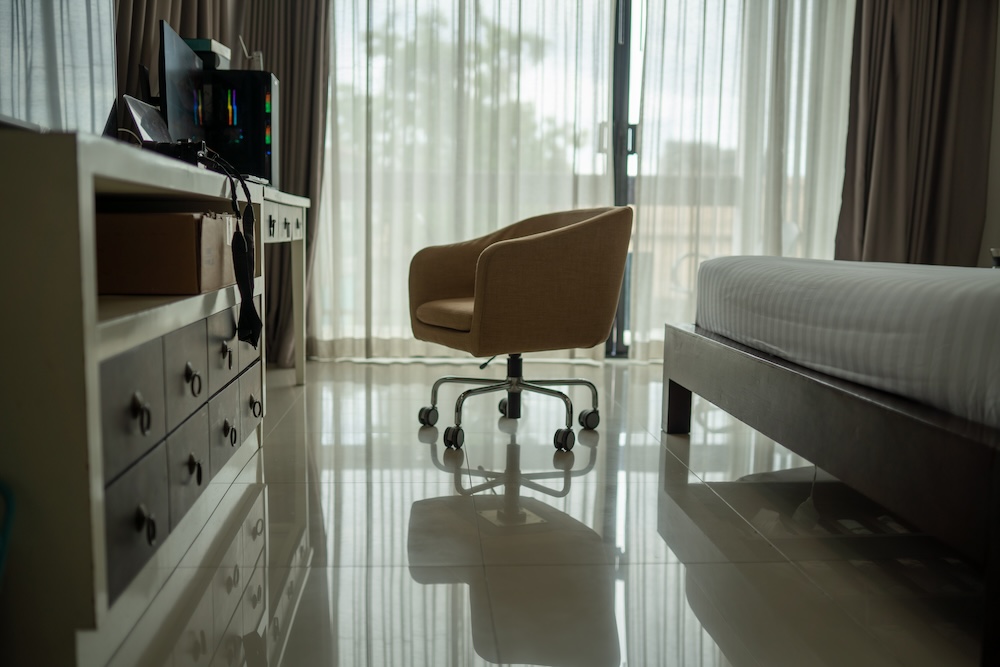Professional upholstery cleaning can breathe new life into your furniture, making it look and feel brand new again. Once that deep-cleaning magic has been worked, you’ll want to ensure your investment lasts. But how do you keep your couch, armchair, or loveseat spotless and fresh after the pros have left? Maintaining your upholstery’s cleanliness isn’t just about appearances; it’s also a matter of keeping your home healthier and extending the life of your furniture.
With just a bit of effort and smart habits, you can preserve that like-new look and feel for months. Below, we’ll discuss easy and practical ways to keep your upholstery in top shape after professional cleaning.
1. Give It Time to Fully Dry
Allowing your upholstery to dry completely after professional cleaning is crucial. Most professional cleaners use steam or water-based methods, meaning your furniture will likely be damp when the job is done. Rushing to use your furniture while it’s still wet affects how the fabric dries and can lead to issues like mildew or unpleasant odors.
Here’s how to ensure proper drying:
- Keep the air circulating. Open windows or use fans to improve airflow and speed up the drying process.
- Avoid placing anything on the furniture. Keep off blankets, pillows, or people until the furniture is fully dry.
- Be patient. Depending on the cleaning method and the fabric, it may take several hours or even a full day for your upholstery to dry completely.
The key here is to resist the temptation to jump right back into your spot on the couch. A little patience now will save you from hassles later.
2. Create a No-Shoes, No-Food Zone
One of the easiest ways to keep your upholstery clean is to limit what comes into contact with it. Before you know it, small habits like eating a snack or putting up your shoe-covered feet on the sofa can undo that fresh-cleaned look. Establishing a few ground rules can make a huge difference.
- No-shoe rule: Encourage family and guests to avoid putting their shoes on the furniture. Consider soft house slippers or socks if you’re lounging with your feet up.
- No food or drink allowed: Small crumbs, sticky spills, or grease can quickly stain upholstery. Create designated eating areas and, if necessary, provide washable throws for “snack zones.”
- Pets welcome (with boundaries): If you’re a pet owner, invest in washable furniture covers or train your furry friends to stay off the couch.
By minimising the number of potential stain-makers near your furniture, you’ll significantly increase the time between cleanings.
3. Handle Spills and Messes Immediately
Even with rules in place, life happens. Maybe your coffee cup tipped over, or your toddler’s juice box sprung an impressive leak. Either way, it’s important to address spills and stains immediately to prevent them from soaking in or setting into the fabric.
- Blot, don’t rub. Use a clean, dry cloth to gently blot the spill. Avoid scrubbing, as this can push the spill deeper into the fabric.
- Use the right cleaner. Check the manufacturer’s cleaning tag on your furniture (look for labels like “W,” “S,” or “WS”) to know what kind of cleaning products are safe to use.
- Test before treating. Always test a small, inconspicuous spot before applying any cleaner to ensure it doesn’t discolor or damage the fabric.
Having quick-drying cloths and a gentle fabric cleaner on hand can help you stay ready for accidents when they happen.
4. Establish a Regular Cleaning Routine
Daily use inevitably introduces dust, pet hair, and debris onto your clean upholstery. Setting a regular maintenance routine can help keep your furniture looking its best between deep cleanings.
- Weekly vacuuming: Use an upholstery attachment on your vacuum to remove surface crumbs, dirt, and hair. Pay special attention to crevices where messes hide.
- Shake removable cushions: If your furniture has detachable cushions, give them a quick shake outside to remove excess dust or dirt.
- Spot cleaning as needed: Don’t wait for stains to set. Address minor spills as soon as you notice them, even if they seem small.
- Rotating cushions: If cushions are reversible, rotate or flip them weekly to evenly distribute wear and tear.
A little maintenance goes a long way toward keeping your furniture looking like it just came back from a professional appointment.
5. Protect Your Upholstery
Protecting your fabrics is just as important as cleaning them. Once your upholstery is clean, it’s worth going the extra mile to prevent stains and damage.
- Apply fabric protectors: Many professional cleaners offer fabric protection treatments, which create an invisible barrier against spills and stains. If you skipped this step, you can also find fabric protector sprays at most home stores.
- Use washable throws and covers: Draping an attractive throw blanket over frequently used areas can protect upholstery from your everyday mess. Choose washable materials for convenience.
- Monitor sunlight exposure: Over time, direct sunlight can fade fabric colors. Position furniture away from sunny windows or use curtains/blinds during peak sunlight hours.
With the right preventive measures, your furniture will stay protected and looking pristine for much longer.
6. Plan Your Next Professional Cleaning
Lastly, regular professional cleanings are key to maintaining your upholstery’s quality and extending its lifespan. Even with the best at-home practices, dirt and oil will gradually settle into the fibers. A professional clean every 12-18 months helps remove what regular vacuuming can’t.
During your next appointment:
- Ask for advice specific to your fabric type. Professional cleaners can recommend maintenance tips tailored to your particular upholstery material.
- Schedule seasonal checkups. High-traffic homes might benefit from more frequent cleanings, such as once every six months.
Knowing when to bring in the pros is just as important as the actions you take between their visits.
Fresh, Clean Upholstery Made Simple
Keeping your upholstery clean after a professional cleaning is all about smart care and consistent habits. By making small changes like drying furniture thoroughly, acting quickly on spills, and setting up a regular cleaning routine, you can enjoy a fresh, inviting living space for months to come. Pair these habits with protective measures like fabric treatments and sun management to extend your upholstery’s lifespan even further.
Remember, your furniture is an investment! A little care now will save you the trouble (and expense) of constant replacements down the line. The key is striking a balance between enjoying your furniture and preserving its cleanliness. Follow these tips, and you’ll keep that professional-clean freshness alive day after day!

Dianne, originally from Rockhampton, hails from a business-oriented family, with her father owning electrical stores and her uncle serving as Mayor. Moving to the Sunshine Coast at 13, she later pursued a rewarding real estate career and raised three children. As a single mom, she balanced university studies with domestic cleaning work. Armed with a Bachelor’s Degree in Business, majoring in Supply Chain Management, Dianne founded and grew Divine Commercial Cleaning into a thriving company. Her success is rooted in strong family mentorship, a positive attitude, and a solution-oriented approach, offering tailored cleaning services with integrity and strategic insight.


